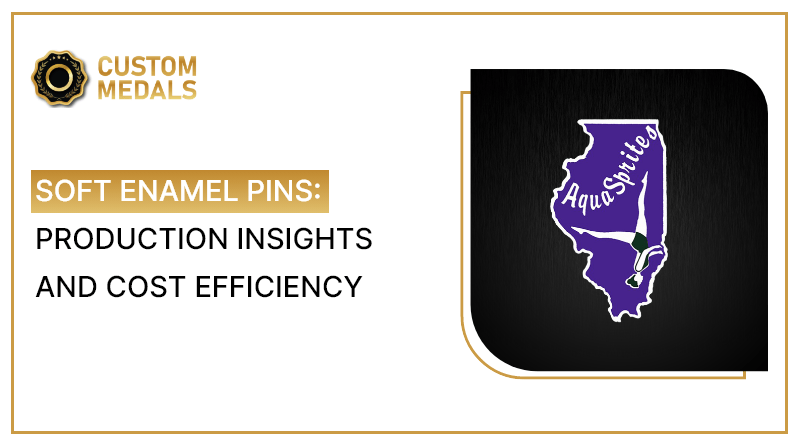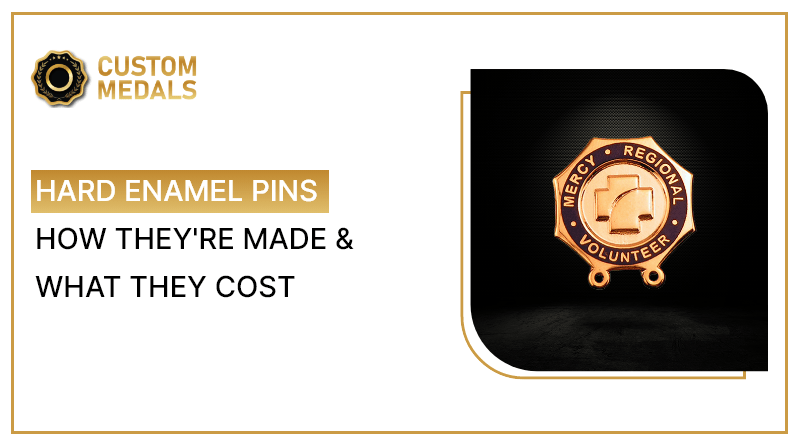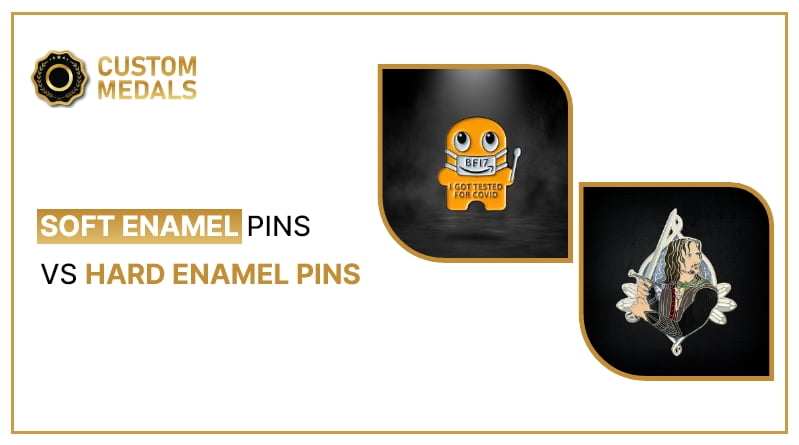- Key Difference Between Hard and Soft Enamel Pins
- Soft Enamel Pins Production Process
- Hard Enamel Pins Production Process
Enamel is a coating often used to add allure to accessories, especially custom lapel pins. Among the most popular options are custom soft enamel pins and hard enamel pins. Predominantly, these pins were used as emblems for organizations, but over time, their purpose has evolved beyond insignia, becoming tokens of self-expression. While both techniques are in high demand, understanding the difference between soft and hard enamel pins can be challenging. Let’s delve into the key factors that distinguish these two types of enamel pins.
Key Differences Between Soft and Hard Enamel Pins
Everyone is familiar with the enameling technique used to emboss custom, aesthetic designs flawlessly. While unbeknownst to many there are differences evident in the designs of both, the soft enamel and hard enamel lapel pins – especially with the varying levels in the glossy texture and lustre. Moreover, when you flick through it, a difference can be felt in terms of surface level, that in soft enamel the designs appear to be more raised. However, there are various other factors that help us differentiate between the two. Let’s take a deeper dive into these aspects

Soft Enamel Pins
Personalized Soft enamel pins are pins that feature more dimensional and vibrant designs on the surface. The vibrant designs appear more raised and with enhanced lustre. While there is more to it:
Production Process:
While it features complex designs the process it undergoes is relatively less exhaustive. The production process is carried out in the stages:
Creation of Enamel
The enamel is prepared using colored liquid resin, which is specifically designed to fill the recessed areas of the pin design.
Die-striking
The die-striking process is carried out where the custom-art-proof design is embossed onto the metal base, creating the raised and recessed areas.
Enamel Filling:
The lowered areas of the design are then filled with the enamel, which stays below the raised metal edges, giving the pin a textured look.
Baking
After the enamel is applied, the mold is placed in a kiln and heated to approximately 450 degrees Fahrenheit. This process, also referred to as firing, allows the enamel to harden and fuse securely to the metal surface.
Epoxy Coating (Optional)
An epoxy coating may be applied to the pin to protect it from potential tarnishing and add a smooth finish.
Plating and Finishing process:
The final stage involves the application of plating and finishing touches. The plating options include gold, silver, or nickel. Polishing is done to enhance the raised areas, giving the pin a glossy and dimensional appearance.
Cost and Durability
The method of manufacturing personalized soft enamel pins are though relatively affordable due to being less intensive. However, this enamel counterpart is not as durable as hard enamel one.The price of the product is always dependent on two factors: the size of the pin and the quantity or amount you’re looking to purchase
Looking for pricing? You can find this information here, on the soft enamel lapel pins page

Hard Enamel Pins
These counterparts though made from enamel but there is a slight variation; these feature more crisp and smooth designs. While there are other varying factors as well.
Production process
These counterparts may feature minimalistic designs and have less raised texture but their manufacturing process is more complex. The production process is carried out in these stages.
Creation of enamel:
Cloisonné enamel is created by filling the small recessed areas (cloisons) on the pin with powdered glass enamel.
Die-striking
The design is stamped onto a metal base using a die to create raised and recessed areas, forming the pattern of the pin.
Application of Enamel:
The enamel is filled into the recessed areas of the pin. Multiple layers are applied, with each layer being fired in a kiln until the enamel is level with the metal edges.
Baking/ Firing
After each layer of enamel is applied, the pins are fired in a kiln to harden the enamel and fuse it to the metal.
Polishing
The metal surfaces are smoothed and any excess enamel is removed.
Plating
Electroplating is a common method for coating hard enamel pins. The pins are dipped in a metal solution and an electric current is used to deposit a thin layer of metal, like gold or silver, onto the surface. This process improves the pin’s look, makes it more durable, and helps prevent rust.
Cost and Durability
The production of the best hard enamel pins is costlier, in comparison to its soft enamel ones, as it involves a more rigorous approach. However, it is more durable with the test of time.
Interested in pricing? Check out the details on our hard enamel lapel pins page.
FAQs
What is the difference between hard and soft enamel pins?
Hard enamel pins feature minimalist texture while soft enamel pins feature dimensional and vibrant designs.
What makes hard enamel more expensive?
The intensive process carried out for instance the color creation method. Moreover, it is more durable.
Can we make our own DIY hard enamel pins at home?
It is quite intensive and rigorous process which cannot be carried out at home or performed by laymen.Therefore, it would more be suitable to approach a credible manufacturing service, specializing in creating lapel pins and various other accessories.
In the nutshell, these both enamel pins have been equally among most sought-after accessories and frills. However, one must know the difference between the two enamel pins before making a selection, whether making a purchase. We have discussed the varying factors of the variants of enamel and how we can enable to deduce these. This will help in making more informed decision of making a purchase or sending your quotation for your desired design to credible custom soft enamel pins manufacturers. Moreover, read our blog to learn everything about hard enamel, its uses, and its production. For comprehensive insights, don’t miss our detailed article on soft enamel, written for your understanding and convenience. Furthermore, if you want to know about hacks of wearing lapel pins, check out our blog that extensively discusses on how to wear and display your lapel pins.

